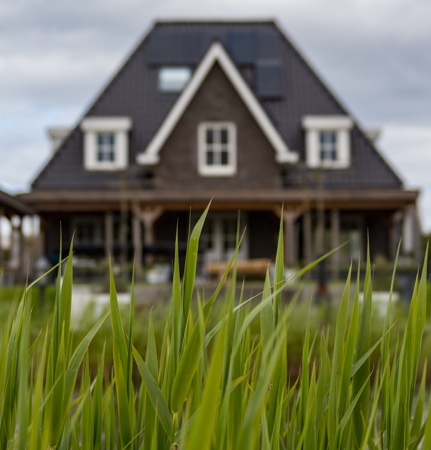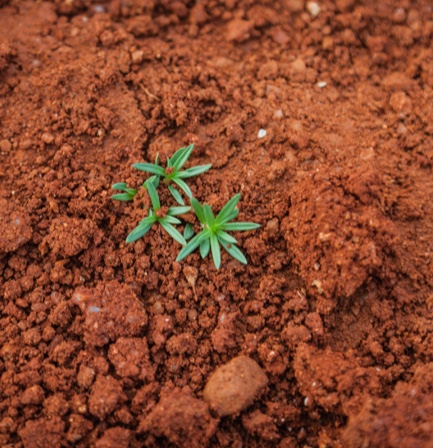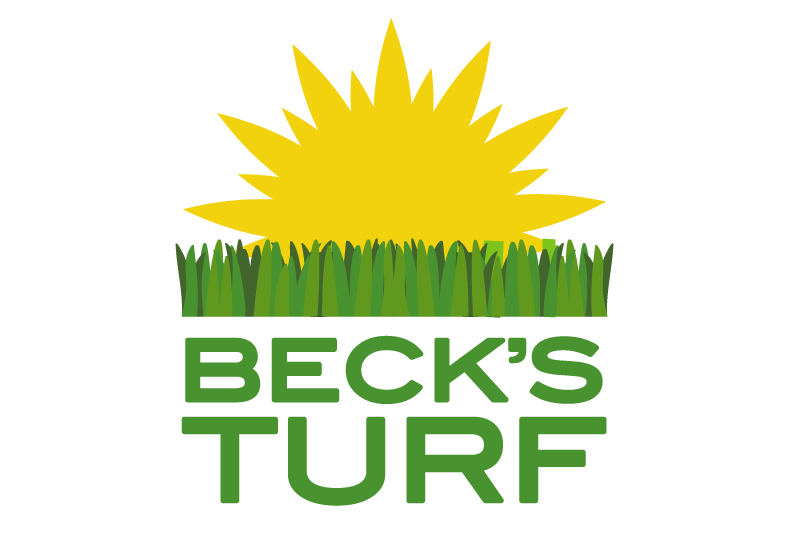Soil Prep and Site Planning

Why is good soil so important?
For optimum growth, turfgrass needs just four things (in the proper balance); sunlight, air, water, and nutrients. Reduce or overdo any of these and the grass may die or simply suffer. In the right proportions, the grass will flourish, providing beauty to the landscape and a clean and safe place to play plus many benefits to the environment.
Grass obtains three of the four essentials factors from the soil, but many soils are less than ideal for growing grass. Some soils contain too much clay and may be very compacted; great for roads, bad for grass, because air and water can’t reach the roots and to grow. Other soils may have too much sand; beautiful on a beach, but difficult for grass because water and nutrients won’t stay in the root zone long enough. Another frequently observed problem with many soils is that its pH (the degree of acidity or alkalinity) is too high or low for optimum growth.

What Is The Best Soil/Soil Depth For Turfgrass?
Turfgrass sod can be installed practically anywhere, even where seeding is impossible or too costly. Turfgrass sod is often used to stop soil erosion and water pollution on slopes where rain would wash away both seed and soil. Turfgrass sod is also available in numerous varieties to serve various regional needs such as type of soil, climate conditions, intended usage, sun and shade conditions, etc.

Can Soils Be Improved?
Practically, without exception, not only can most soils be improved, they usually need to be improved to get the maximum results with only a minimum of on-going effort.
The knowledge of what’s necessary, the amount and availability of materials and the immediate costs of time and money are the factors that typically deter people from taking the steps necessary to improve the soil.
The fact is that failing to improve the soil before planting is only inviting a much greater and continual investment of time and money that will never return its value as fully as good preparation.

Step-by-Step Site Preparation
The beauty is in the blades, but the action is in the roots, is a good adage to remember when growing grass. Thus, the value of proper site preparation and soil improvement, before any planting takes place, is that it will be easier for the grass roots to penetrate deeply and evenly. Deep roots will make the lawn more drought resistant, more efficient water and nutrients user and more dense as new grass plant shoots emerge. A dense lawn crowds out weeds and better resists insects and disease.
Follow these simple steps for a beautiful,
healthy and trouble-free lawn
1
Clear the site of all building materials (wood, cement, bricks, etc.) as well as any buried stumps, rocks, stones or other debris that are larger than 2-3 inches in diameter.
2
Rough grade the area to eliminate any drainage problems (including sloping the grade away from building foundations, eliminating/reducing severe slopes and filling low-lying areas. A tractor mounted blade and/or box are most often used, but it can be done with hand tools if the area is small. This will probably uncover more debris that should be removed and not buried.
3
Initial tilling to a depth of at least 2 inches, should be completed prior to adding any topsoil or soil amendments. This will control most annual weeds, alleviate subsoil compaction, permit a bonding of the topsoil to the subsoil and improve root penetration as well as air exchange and water movement.
4
Add topsoil to achieve a total topsoil depth of 4-6 inches after firming. The topsoil should be a loamy sand, sandy loam, clay loam, loam, silt loam, sandy clay loam or other soil suitable for the area.
5
Test the soil pH with a chemical soil test to determine if it requires any correcting materials. Acidic Soils (pH of 6 and lower) can be improved by adding lime. Alkaline soils (pH of 7.5 and up) can be improved by adding sulfur or gypsum. The type and total amount applied for both depends on levels of acidity/alkalinity and should be based on the advice of a reliable garden center, turf professional, or soil scientist.
6
Apply “starter fertilizer” that is high in phosphate (“P” or the middle number on a bag of fertilizer) at a rate recommended for the particular product. To avoid root injury to the newly installed turfgrass sod, the fertilizer should be raked into the top 3-4 inches.
7
Finish grade the entire site, maintaining the rough grading contours and slopes, with a tractor mounted box blade for large areas or a heavy-duty rake for smaller sites.
8
Roll the area with a lawn roller one-third full of water to firm and settle the surface. Low spots revealed by this step should be filled to match the surrounding grade surface. If time permits, allow the area to settle further with rainfall or by applying irrigation water.
